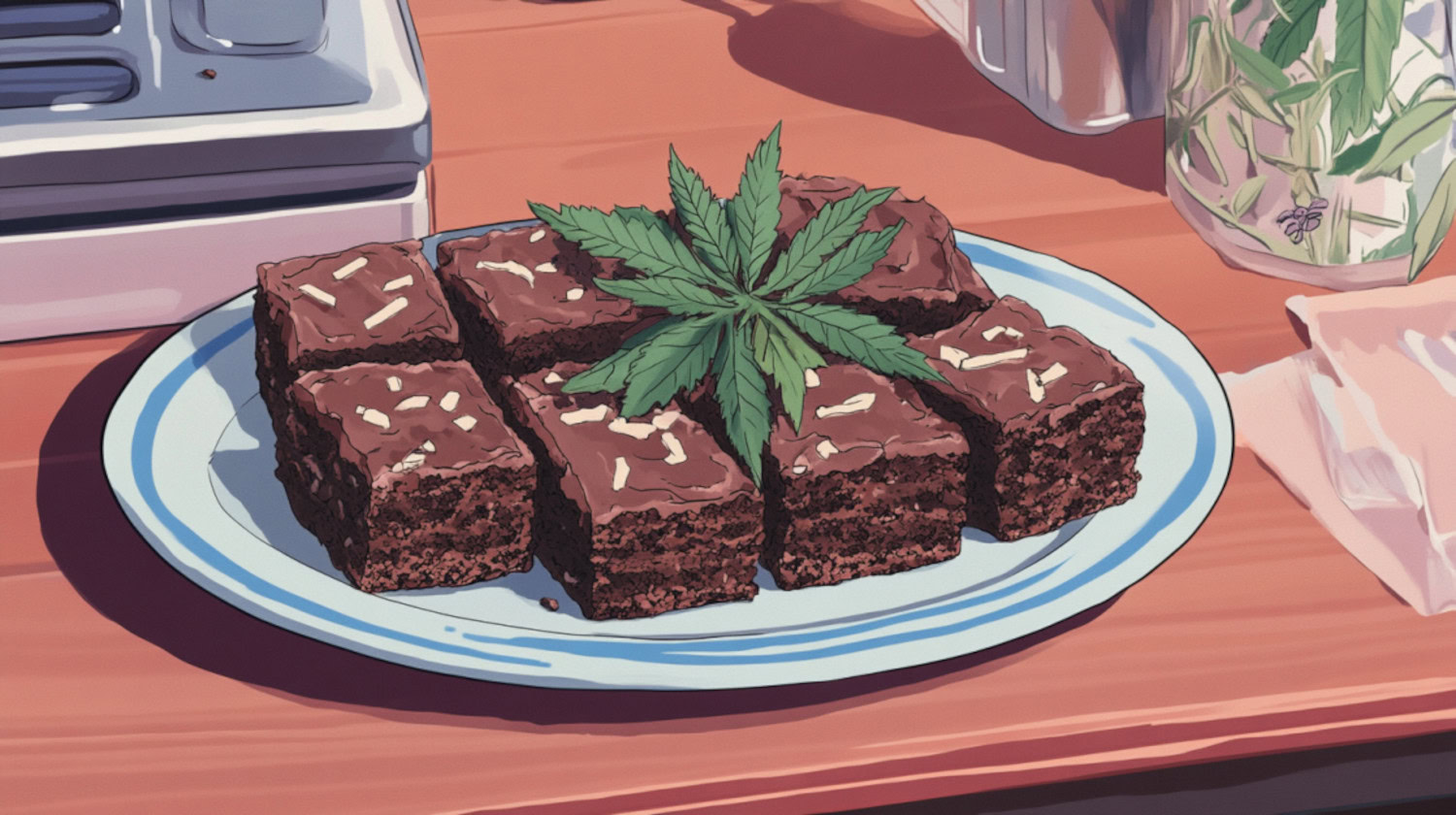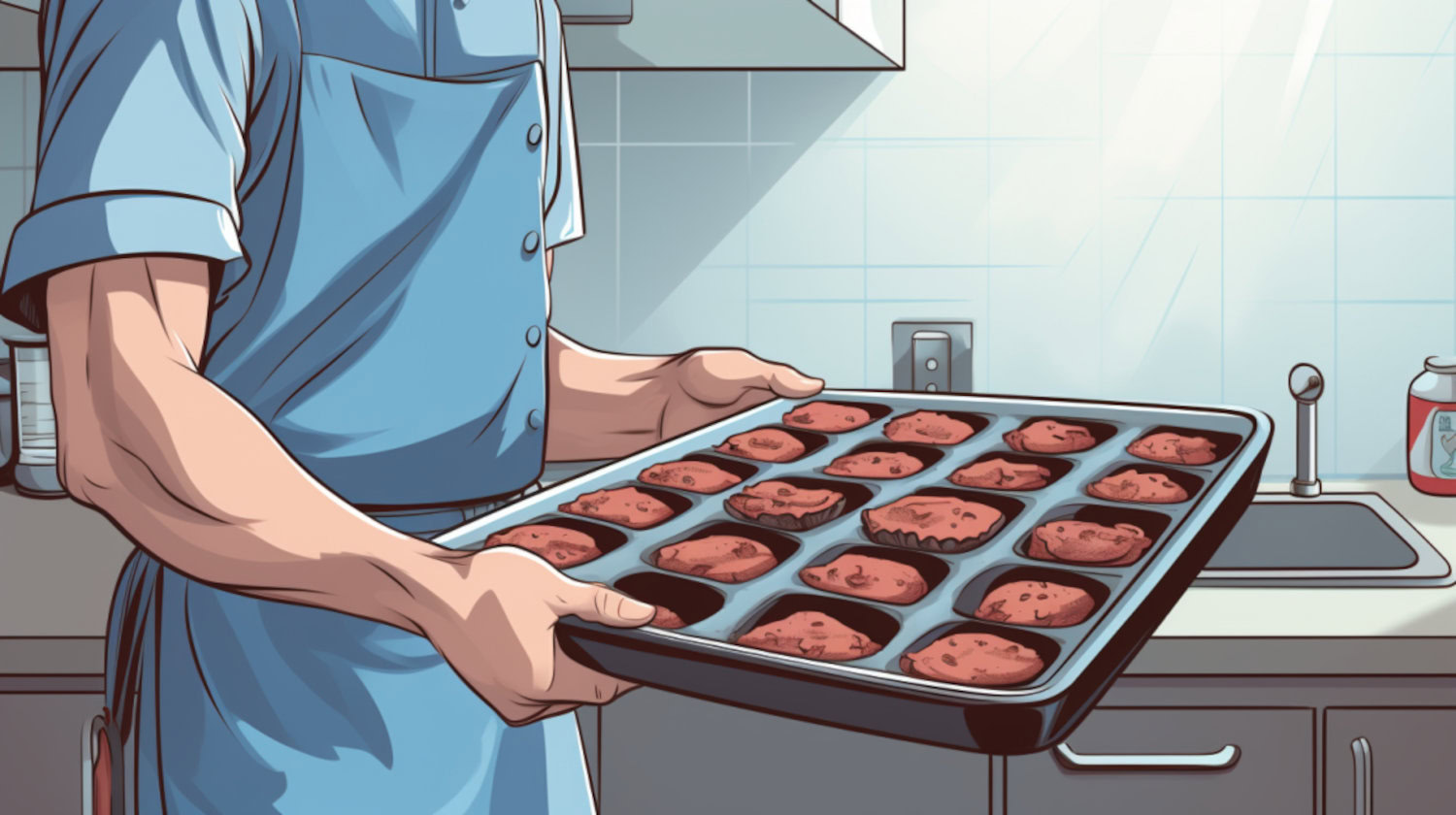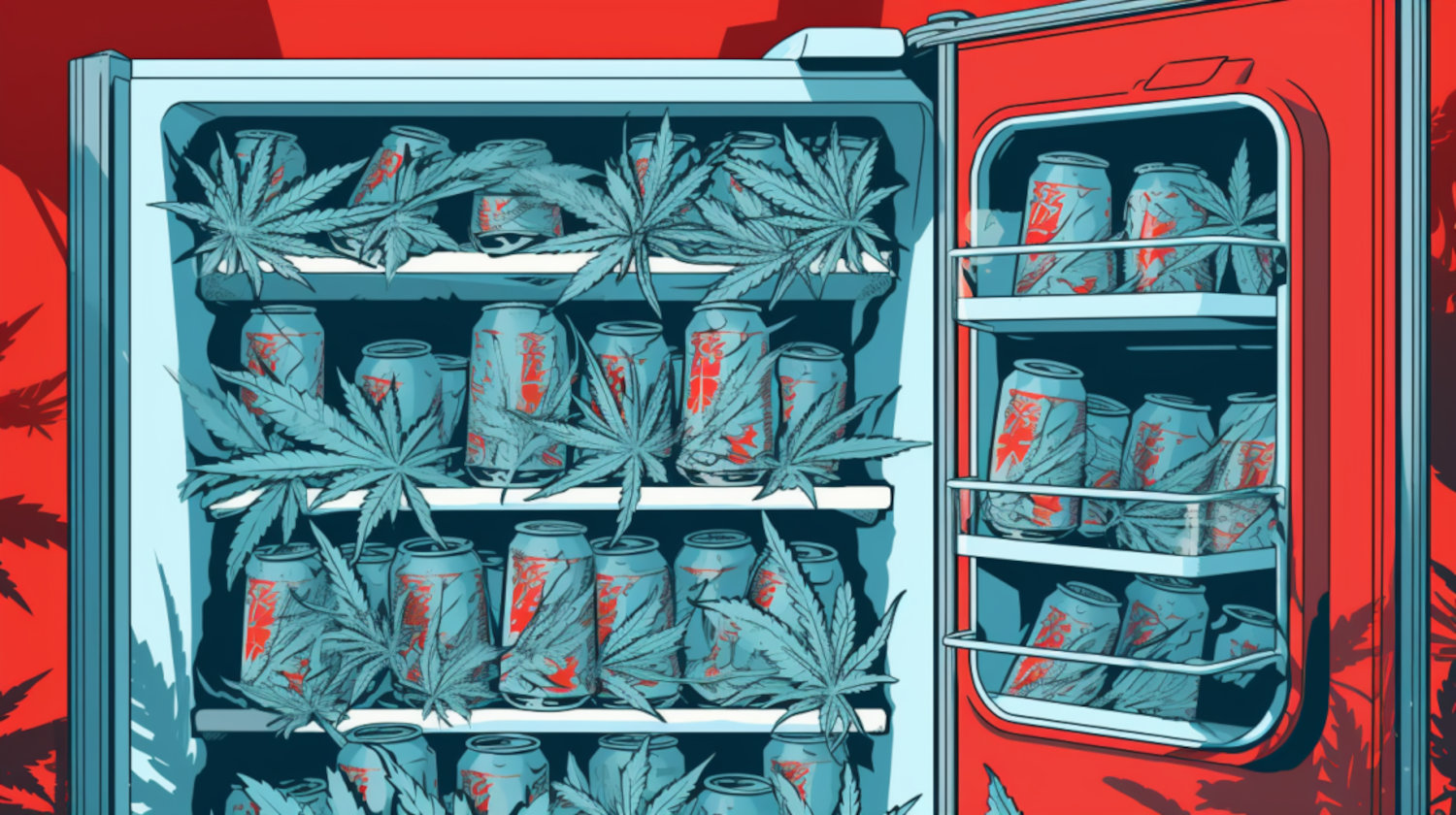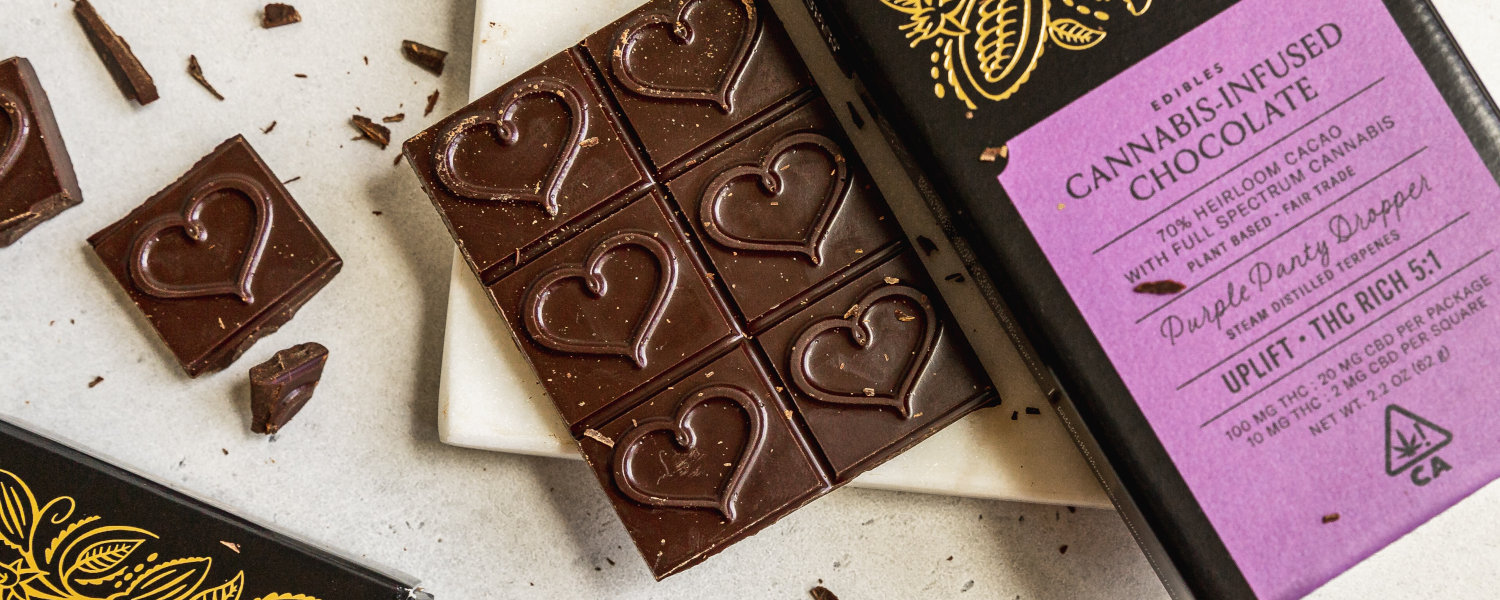In This Article
- Understanding 11-Hydroxy-THC
- Where Does 11-Hydroxy-THC Come From?
- How Does 11-Hydroxy-THC Affect the Body?
- Increased Potency
- Delayed Onset and Prolonged Effects
- Interaction with Cannabinoid Receptors
- Factors Influencing Effects
- Comparing 11-Hydroxy-THC to Delta-9 THC
- Is Delta-11 the Same as 11-Hydroxy-THC?
- How to Have the Best Experience with 11-Hydroxy-THC
- Safety Considerations When Consuming Edibles
- Exploring Different Edible Options
- The Science Behind Edibles and the Liver
- Edibles vs. Smoking: Which Is Better?
- Do CBD Edibles Produce 11-Hydroxy-THC?
- References
Key Takeaways
- The liver breaks THC down into 11-hydroxy-THC when someone consumes edibles.
- 11-hydroxy-THC is responsible for the increased potency and prolonged effects of edibles.
- 11-hydroxy-THC is further broken down to 11-COOH-THC, a non-intoxicating metabolite detected by drug tests.
It isn’t your imagination. No matter what type of edible you prefer — gummies or chocolates, beverages or savory snacks — an edible hits differently than smoking or vaping. When you consume an edible, you experience the effects of a compound called 11-hydroxy-THC, one of the key reasons why edibles can feel so much stronger and longer lasting. Understanding how this metabolite works can help avoid surprises and make the most of your cannabis experience.
Understanding 11-Hydroxy-THC

11-Hydroxy-THC is a metabolite of delta-9-tetrahydrocannabinol (THC), the primary intoxicating component in cannabis. It's a byproduct formed when the body processes THC. While THC is responsible for the immediate effects felt after smoking or vaping, 11-hydroxy-THC plays a role in the delayed and often more intense effects experienced when consuming cannabis edibles.
Where Does 11-Hydroxy-THC Come From?
When you eat or drink THC edibles, it doesn't affect your body the same way as when you inhale it. Instead of entering your bloodstream directly through the lungs, the THC travels through your digestive system. Here's how it works:
- Ingestion: You consume an edible containing THC.
- Digestion: The edible breaks down in your stomach.
- Absorption: THC absorbs into your bloodstream through the walls of your intestines.
- Metabolism: The THC-rich blood travels to your liver via the portal vein. In the liver, enzymes metabolize THC into 11-hydroxy-THC.
- Circulation: 11-hydroxy-THC then circulates through your bloodstream, crossing the blood-brain barrier more effectively than THC.1
This metabolic process is known as first-pass metabolism. It's why edibles can feel more potent and have longer-lasting effects than other consumption methods.
Although the body may produce smaller amounts of 11-Hydroxy-THC from vaping or smoking cannabis, it is much more abundant when metabolized from edibles.
How Does 11-Hydroxy-THC Affect the Body?
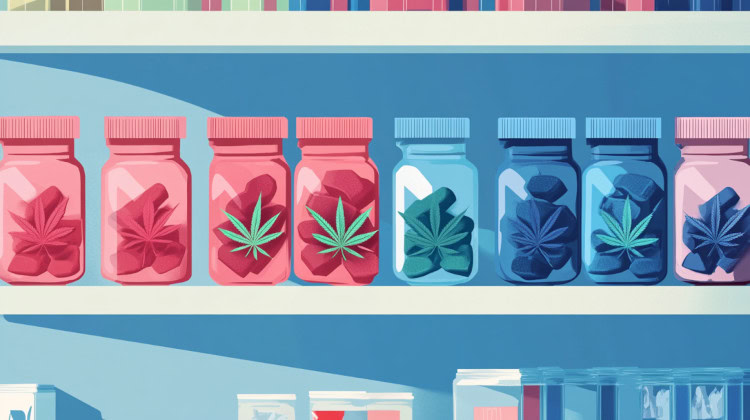
The effects of 11-hydroxy-THC are notably different from those of THC. This is primarily due to its increased potency and ability to cross the blood-brain barrier.
Increased Potency
Research suggests that 11-hydroxy-THC is more potent than THC. It can produce more substantial psychoactive effects, even at lower concentrations. After you consume an edible, higher quantities of 11-hydroxy-THC appear in your blood compared to when you inhale THC. This can produce a more intense feeling of intoxication.
Delayed Onset and Prolonged Effects
When you consume edibles, the effects take longer to appear compared to smoking or vaping. This delay, typically ranging from 30 minutes to 2 hours, happens because the THC in edibles must first pass through your digestive system. Then, it’s metabolized into 11-hydroxy-THC by the liver.
Once the effects begin, they gradually peak, usually occurring between 2 to 4 hours after ingestion. Unlike the shorter-lived high from inhaling cannabis, the effects of edibles can last significantly longer—often 6 to 8 hours or more—making them a preferred option for those seeking sustained medical relief or a prolonged experience.
For some individuals, the effects of an edible can last into the next day, especially with high doses or edibles containing more potent formulations.
Interaction with Cannabinoid Receptors
Both THC and 11-hydroxy-THC interact with the CB1 and CB2 cannabinoid receptors in your body. However, 11-hydroxy-THC binds more readily to these receptors, especially CB1. Since the bond of 11-hydroxy-THC is stronger than THC to the CB1 receptor, this enhances its intoxicating effects.2
Factors Influencing Effects
Individual factors such as weight, metabolism, gender, and eating habits can influence how your body processes THC and 11-hydroxy-THC. For example, consuming edibles on an empty stomach may lead to faster absorption and more potent effects.
Some people report they don’t feel any effects from edibles, although they do from smoking or vaping. It is possible their bodies don’t absorb or break down ingested cannabinoids. This can happen due to genetic differences or disruptions in enzymes that help process these compounds.3
Regular cannabis use can also impact your tolerance. Experienced users may need higher doses to feel the same effects. Meanwhile, those who are tolerant to smoked or vaped cannabis might not necessarily have the same tolerance for edibles.
Comparing 11-Hydroxy-THC to Delta-9 THC
An overview of the differences between 11-hydroxy-THC and THC explains the effects of cannabis consumption.
| THC | 11-Hydroxy-THC | |
| Absorption and Metabolism | Enters the bloodstream through the lungs, reaching the brain quickly. Minimal conversion to 11-hydroxy-THC. | Produced when THC is metabolized in the liver after ingestion, resulting in higher levels of this metabolite. |
| Intoxicating Effects | Quick onset, with effects peaking in 20-30 minutes and tapering off within a few hours. | Delayed onset but more intense intoxicating effects. |
| Onset Time | Immediate to a few minutes. | 30 minutes to 2 hours. |
Is Delta-11 the Same as 11-Hydroxy-THC?
Delta-11 and 11-hydroxy-THC are not the same. Delta-11 THC is a lesser-known cannabinoid with limited research and availability. 11-hydroxy-THC is a well-studied metabolite of THC that forms in the liver after a THC edible is consumed.
How to Have the Best Experience with 11-Hydroxy-THC

Because 11-hydroxy-THC is both potent and has a delayed onset, approach edibles with care, especially if you’re new to cannabis. Start with a low dose, 5 mg of THC or less, to minimize the risk of overdoing it. After taking an edible, give your body enough time—at least two hours—to metabolize the THC and for the effects to set in before considering consuming more.
With a range of available edibles, from gummies and baked goods to beverages, most can find a product to enjoy. Always check the packaging for THC content to confirm the dose is manageable, particularly for beginners. For example, a chocolate bar may contain 100 mg of THC, but a suggested dose is only one square, or 10 mg of THC.
Starting with a good mindset and social environment to consume edibles can improve the experience. It’s best to be in a familiar, comfortable setting where you can relax and fully enjoy the effects. If you’re trying edibles for the first time, consider having a trusted friend nearby for support. Staying hydrated and eating either before or alongside your edible can moderate the intensity of the effects.
Safety Considerations When Consuming Edibles
The delayed onset of edibles makes it easy to overconsume if you’re not careful. Many people mistakenly take more before the first dose has had time to take effect. Waiting at least two hours before considering another dose may avoid uncomfortable highs. Knowing your limits and starting with small amounts can help you enjoy edibles safely.
Understanding product labels is another important safety step. Always check the THC content per serving and package to determine your total dose. Some edibles may contain multiple servings in one piece, so portioning them correctly is necessary.
If you’re taking medications, especially those metabolized by the liver, consult a healthcare provider to avoid potential interactions.
Always store edibles securely, out of reach of children or pets, and clearly label them to prevent accidental consumption.
Exploring Different Edible Options
Should you make your own edibles or purchase from a dispensary? Each option has pros and cons when deciding between homemade and store-bought edibles. Homemade edibles allow for customization but can be difficult to dose accurately. If you’re interested in making your own, learning how to decarboxylate cannabis correctly is key.
On the other hand, store-bought edibles offer precise dosing and come in various flavors and forms. Another consideration is whether to choose CBD or THC edibles. CBD edibles are non-intoxicating and often used for relaxation or pain relief, while THC edibles are intoxicating and provide the “high” commonly associated with cannabis.
The Science Behind Edibles and the Liver
When you consume an edible, the liver's first-pass metabolism converts THC into 11-hydroxy-THC. Liver enzymes like CYP2C9 and CYP2C19 accomplish this transformation.
Afterward, 11-hydroxy-THC is further metabolized into 11-COOH-THC, a non-intoxicating compound. (11-COOH-THC is the detectable substance in drug tests). Regular use of edibles may also influence liver enzyme activity over time.
If you have liver conditions or concerns, consulting a healthcare provider before consuming edibles is always a good idea.
Edibles vs. Smoking: Which Is Better?
The choice between edibles and smoking depends on your preferences and what effects you’re looking for. Edibles provide a smoke-free option, last much longer, and are ideal for those seeking sustained relief or a discreet way to consume cannabis. On the other hand, smoking offers a quicker onset of effects that are easier to manage for those looking for short-term relief.
Do CBD Edibles Produce 11-Hydroxy-THC?
When consumed as an edible, CBD follows the same path through the digestive system and liver, producing different metabolites. Unlike THC, pure CBD does not produce 11-hydroxy-THC. 11-hydroxy-THC is a by-product of THC in the liver, and CBD does not convert to THC. However, many CBD products do contain some THC. Any THC in the edible will convert to 11-hydroxy-THC.
The 11-hydroxy-THC compound provides a different cannabis experience from inhaled forms. By understanding its potency, delayed onset, and how it differs from THC, you’ll be prepared to make informed choices and have a safer experience. Remember, patience is your best friend. Start low, go slow, and enjoy the journey.
References
- Barrus D, Capogrossi K, Cates S, et al. Tasty THC: Promises and Challenges of Cannabis Edibles. Methods Rep RTI Press. Published online November 15, 2016. doi:https://doi.org/10.3768/rtipress.2016.op.0035.1611 ↩︎
- Keti Bardhi, Coates SM, Christy, Lazarus P. Cannabinoids and drug metabolizing enzymes: potential for drug-drug interactions and implications for drug safety and efficacy. Expert Review of Clinical Pharmacology. 2022;15(12):1443-1460. doi:https://doi.org/10.1080/17512433.2022.2148655 ↩︎
- Davis CN, Markowitz JS, Squeglia LM, et al. Evidence for sex differences in the impact of cytochrome P450 genotypes on early subjective effects of cannabis. Addictive Behaviors. 2024;153:107996-107996. doi:https://doi.org/10.1016/j.addbeh.2024.107996 ↩︎
The information in this article and any included images or charts are for educational purposes only. This information is neither a substitute for, nor does it replace, professional legal advice or medical advice, diagnosis, or treatment. If you have any concerns or questions about laws, regulations, or your health, you should always consult with an attorney, physician or other licensed professional.

